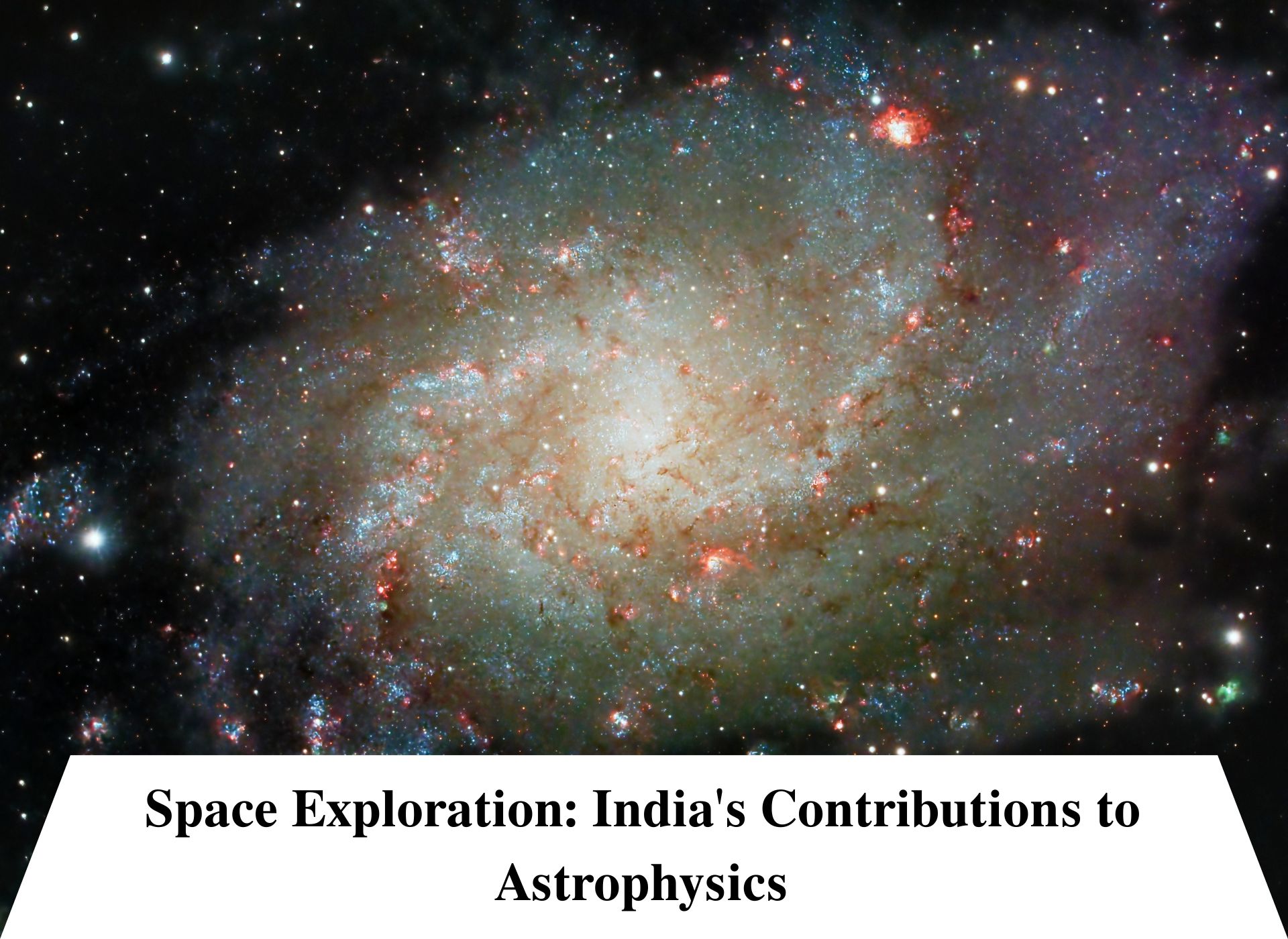Have you ever looked up at the night sky and marveled at the vastness of space? India, a country with a rich history of scientific exploration, has always been captivated by the mysteries of the cosmos. At Gyan Vihar School, one of the Best Schools in Jaipur, we nurture a love for science and space exploration in our students. This blog explores India’s remarkable contributions to astrophysics, the branch of astronomy that studies the physical properties and processes of celestial objects.
A Legacy of Stargazing: Ancient India’s Astronomical Roots
India’s fascination with the cosmos dates back millennia. Ancient Indian texts like the Vedas and the Puranas contain detailed observations of the night sky, constellations, and celestial movements. Early Indian astronomers developed sophisticated calendars based on lunar cycles and identified several constellations still recognized today, such as Ursa Major (the Great Bear) and Orion.
Here are some of the hallmarks of ancient Indian astronomy:
- Vedic Texts and Astronomical Observations: The Vedas, ancient Indian scriptures, contain detailed observations of the night sky, including references to constellations, planetary movements, and the concept of day and night.
- The Jyotish Vedanga: This ancient astronomical text, part of the six Vedangas (auxiliary sciences to the Vedas), elaborates on celestial movements, eclipses, and the development of the Hindu calendar system.
- Contributions of Renowned Astronomers: India has a rich history of astronomers who made significant contributions. Aryabhata (5th century AD) proposed a heliocentric model (Sun-centered) centuries before Copernicus, while Varahamihira (6th century AD) wrote influential texts on planetary positions and eclipses.
- Sophisticated Instruments: Early Indian astronomers developed instruments like the gnomon (sundial) and the dhanur yantra (astrolabe) to measure time, track celestial movements, and predict astronomical events.
- Importance of Astrology (Jyotish): Jyotish, the Vedic system of astrology, was closely linked to astronomy. While distinct from modern astrology, Jyotish used celestial positions to understand planetary influences and make predictions about earthly events.
The Dawn of Modern Astronomy: India’s Space Age
India’s space program, spearheaded by the Indian Space Research Organisation (ISRO), has taken significant strides in recent decades. ISRO’s vision is to harness space technology for national development, scientific advancement, and peaceful exploration of the cosmos. This vision has led to several groundbreaking missions that have contributed significantly to astrophysics:
- Aryabhata (1975): India’s first satellite, Aryabhata, named after the legendary Indian astronomer, was dedicated to studying the sun’s X-ray emissions. This mission provided valuable insights into solar activity and its impact on Earth’s atmosphere.
- Chandrayaan-1 (2008): India’s first lunar mission, Chandrayaan-1, carried scientific instruments to study the lunar surface composition, map water molecules on the Moon, and investigate the lunar exosphere (thin atmosphere). This mission provided crucial data about the Moon’s history and potential resources.
- AstroSat (2015): India’s first dedicated astronomy satellite, AstroSat, carries five telescopes to study celestial objects in ultraviolet, optical, and X-ray wavelengths. AstroSat has made significant observations of black holes, neutron stars, star clusters, and distant galaxies, contributing to our understanding of the universe’s evolution.
- Mars Orbiter Mission (MOM) (2014): India’s maiden mission to Mars, MOM (Mangalyaan), successfully entered Martian orbit in 2014. This low-cost mission studied the Martian atmosphere, composition, and climate, providing valuable data about the Red Planet.
- Upcoming Missions: ISRO has several exciting astrophysics missions planned for the future, including Aditya-L1 (to study the Sun’s corona), Xposat (to study cosmic X-ray sources), and Chandrayaan-3 (India’s first lunar lander mission). These missions promise to further expand India’s contributions to our understanding of the universe.
ISRO’s Impact: Beyond Scientific Discovery
ISRO’s space exploration efforts not only contribute to astrophysics but also have a broader impact:
- Technological Advancement: Space missions drive innovation in areas like rocket propulsion, satellite technology, and materials science. These advancements benefit other sectors like telecommunications, remote sensing, and disaster management.
- Inspiring the Next Generation: India’s successful space missions have ignited a passion for science and space exploration among young people. This inspires students to pursue careers in STEM fields (Science, Technology, Engineering, and Mathematics) and become the future generation of scientists and astronauts.
- Socio-Economic Benefits: Satellite technology facilitates telemedicine, connecting doctors in urban areas with patients in remote regions. Remote sensing data aids in agricultural planning, disaster management, and resource mapping.
- Education and Skill Development: ISRO’s space missions inspire students to pursue careers in STEM fields and contribute to a skilled workforce in the space sector.
- Global Recognition: India’s successful space missions have garnered international recognition, positioning India as a leader in space exploration and technology.
- National Security: ISRO’s space assets play a crucial role in national security by providing communication and surveillance capabilities. Earth observation satellites monitor borders and maritime activities.
- Satellites for Climate Change Monitoring: ISRO’s satellites monitor environmental changes, track deforestation, and provide data for climate change mitigation strategies.
Gyan Vihar School: Nurturing Future Astronomers
At Gyan Vihar School, a leading CBSE School in Jaipur, we believe in nurturing a love for astronomy and space exploration in our students. We integrate astronomy into our curriculum, sparking curiosity and igniting a passion for the cosmos.
The Future of Indian Astrophysics: A Bright Horizon
India’s journey in astrophysics is just beginning. With a growing space program, talented scientists, and a rising generation of space enthusiasts, India is poised to make significant contributions to our understanding of the universe. At Gyan Vihar School, we are committed to nurturing the next generation of astronomers who will continue India’s legacy of scientific exploration and push the boundaries of our knowledge about the cosmos.
Looking to the Stars: A Call to Action
Space exploration is a captivating field filled with wonder and endless possibilities. If you’re fascinated by the universe and curious about its secrets, here are some steps you can take:
- Explore Astronomy Resources: Numerous online resources, books, and educational videos can deepen your understanding of astronomy and astrophysics.
- Observe the Night Sky: Download stargazing apps, visit a planetarium, or attend stargazing events to learn about constellations and celestial objects.
- Participate in Astronomy Olympiads: Many national and international astronomy Olympiads test your knowledge and challenge you to apply your understanding of astronomy.
- Consider a Career in Astrophysics: If your passion lies in space exploration, pursue STEM subjects in school and consider a career in astronomy, astrophysics, or aerospace engineering.
The universe holds countless mysteries waiting to be unraveled. With dedication, curiosity, and the right tools, you can be part of the exciting journey of astronomical exploration and contribute to India’s remarkable legacy in space science. So, keep looking up, keep exploring, and reach for the stars!







